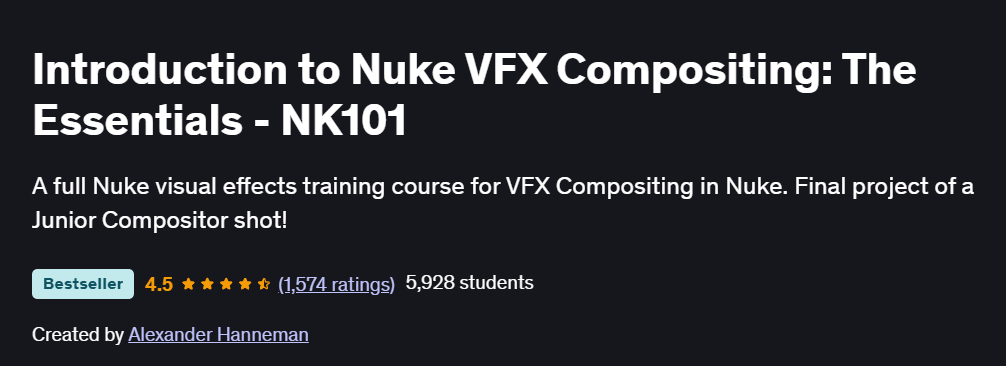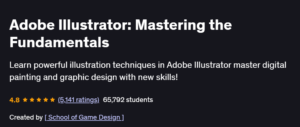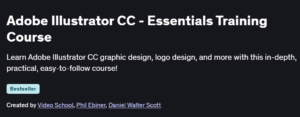Introduction to Nuke VFX Compositing: The Essentials – NK101
A practical, project-driven introduction to Nuke that equips you with essential compositing skills in under five hours.
What will you learn in Introduction to Nuke VFX Compositing: The Essentials – NK101 Course
Navigate The Foundry’s Nuke interface: node graph, properties panel, viewer, and toolbar
Perform basic compositing operations: merges, transforms, color corrections, and keying techniques
Leverage 2D and 3D workflow: read/write nodes, camera tracking, and basic 3D projections
Create and manage multi-pass EXR workflows for high-dynamic-range compositing
Program Overview
Module 1: Nuke Fundamentals
⏳ 30 minutes
Topics: Installation, project setup, interface walkthrough (Node Graph, Viewer, Properties)
Hands-on: Import a plate, connect Read → Viewer, and explore node playback controls
Module 2: Core 2D Operations
⏳ 45 minutes
Topics: Merge node types, transform tools (Transform, GridWarp), and basic roto/roto-paint
Hands-on: Composite a foreground plate over a background, adjust scale/position, and rotoscope a simple object
Module 3: Color Correction & Grading
⏳ 45 minutes
Topics: Grade, ColorCorrect, HueCorrect, and exposure adjustments; using Histogram and Scopes
Hands-on: Match color between two shots using Grade and Viewer scopes for reference
Module 4: Keying Techniques
⏳ 60 minutes
Topics: Primatte and Ultimatte workflows, IBKKeyer, despill methods, edge-cleanup tools
Hands-on: Key a green-screen plate, remove spill, and integrate it over a CG background
Module 5: 3D Basics & Camera Tracking
⏳ 60 minutes
Topics: ScanlineRender setup, Card3D, CameraTracker node, basic point cloud cleanup
Hands-on: Track a moving camera, project a logo onto a surface, and render via ScanlineRender
Module 6: Multi-Pass Workflow with EXR
⏳ 45 minutes
Topics: EXR channels, ShuffleCopy, MergeMatte workflows, cryptomatte introduction
Hands-on: Composite diffuse, specular, and shadows from a multi-pass EXR into a final beauty pass
Module 7: Scripting & Gizmos
⏳ 30 minutes
Topics: Python expressions in knobs, creating and sharing custom gizmos
Hands-on: Build a simple gizmo that automates a common node setup (e.g., key/spill cleanup)
Module 8: Project & Best Practices
⏳ 45 minutes
Topics: Node organization (backdrops, annotations), versioning, caching strategies
Hands-on: Assemble a mini-project combining tracking, keying, color correction, and cleanup; deliver a clean, organized node tree
Get certificate
Job Outlook
Compositor (Junior): $50,000–$70,000/year — assist in VFX studios, learn pipeline integration
VFX Artist (Generalist): $60,000–$90,000/year — handle end-to-end compositing tasks in film/TV/games
Motion Graphics Artist: $55,000–$80,000/year — integrate compositing skills for broadcast, advertising, and online media
- Hands-on demos mirror industry workflows, from keying to 3D projection
- Covers both 2D and introductory 3D pipelines in a tight 5-hour curriculum
- Introduces scripting and gizmos early, empowering faster, cleaner setups
- May feel brief for complete novices—supplement with practice on personal plates
- Advanced topics (deep compositing, stochastic effects) are beyond scope
Specification: Introduction to Nuke VFX Compositing: The Essentials – NK101
|





